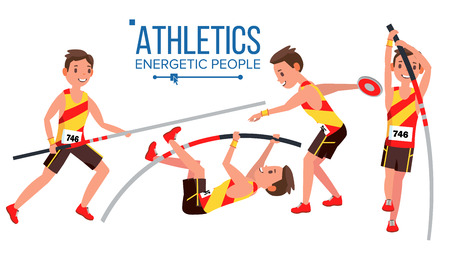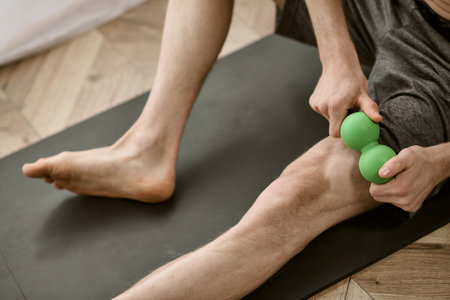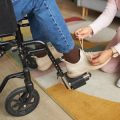Introduction to Ligamentous Knee Injuries in the UK
Knee ligament injuries are a significant concern within the UK, affecting individuals of all ages and activity levels. The most commonly injured ligaments include the anterior cruciate ligament (ACL), posterior cruciate ligament (PCL), medial collateral ligament (MCL), and lateral collateral ligament (LCL). These injuries frequently arise from sports such as football, rugby, and netball, but can also occur during everyday activities or accidents. Epidemiological data suggest that thousands of knee ligament injuries are reported annually across England, Scotland, Wales, and Northern Ireland, with young adults and active populations particularly at risk. The impact on daily life can be substantial; patients often experience pain, instability, reduced mobility, and an inability to participate in work or leisure activities. Moreover, these injuries place a considerable burden on NHS resources, from initial diagnosis and imaging through to surgical intervention and rehabilitation services. Addressing ligamentous knee injuries with evidence-based rehabilitation protocols is therefore essential not only for optimal patient outcomes but also for efficient use of healthcare resources within the UKs unique healthcare system.
2. Initial Assessment and Diagnosis Pathways
In the UK, the initial assessment of ligamentous knee injuries is guided by well-established clinical protocols designed to ensure timely diagnosis and appropriate management within the NHS and private healthcare settings. The process typically begins in primary care or emergency departments, where a detailed patient history is taken, focusing on the mechanism of injury, symptoms such as swelling, instability, and pain, as well as any prior knee problems.
Clinical Assessment Protocols
Physical examination remains fundamental, employing standardised tests such as Lachman’s test, anterior drawer test, and valgus/varus stress tests to assess the integrity of specific ligaments. These assessments are often supported by recognised UK-based guidelines to differentiate between minor sprains and more serious injuries requiring specialist intervention.
Table: Key Clinical Assessment Steps in UK Practice
| Assessment Step | Description | Common UK Practice |
|---|---|---|
| History Taking | Detailed enquiry into mechanism and timeline of injury | Thorough documentation in line with NICE recommendations |
| Physical Examination | Lachman’s, anterior/posterior drawer, pivot shift tests | Standard protocol for suspected ligament injury |
| Initial Imaging Decision | Assess need for X-ray/MRI based on Ottawa Knee Rules and clinical suspicion | X-rays for acute trauma; MRI for ongoing instability or diagnostic uncertainty |
| Referral Pathway | Decision on referral to physiotherapy or orthopaedics | NHS e-Referral System (e-RS) used widely for secondary care access |
Use of Imaging in Diagnosis
Imaging plays a vital role in confirming the diagnosis when clinical findings are inconclusive or when complex multi-ligament injuries are suspected. In accordance with NICE guidelines, plain radiographs are usually reserved for suspected fractures or gross bony injury. MRI is considered the gold standard for soft tissue evaluation and is widely accessible across most NHS trusts following appropriate referral from GPs or A&E clinicians.
Referral Processes Across UK Healthcare Settings
The decision to refer patients depends on injury severity and functional impairment. Most mild to moderate injuries are initially managed conservatively with physiotherapy referral via local musculoskeletal services. More severe cases—such as those involving complete ligament ruptures or associated injuries—are referred directly to orthopaedic clinics using structured pathways like the NHS e-Referral System. This ensures that patients receive timely specialist input while optimising resource allocation within the public health system.
Summary Table: Typical Referral Pathways in the UK
| Injury Severity | First Point of Contact | Further Referral Pathway |
|---|---|---|
| Mild (Grade I-II) | GP / Physiotherapist / A&E Minor Injuries Unit | NHS Community Physio Services; Self-management advice given if appropriate |
| Severe (Grade III/Complex) | A&E / Urgent Care Centre | NHS Orthopaedic Outpatients via e-RS; MRI requested as indicated |
| Recurrent/Chronic Instability | GP / Musculoskeletal Triage Clinic | MRI & Orthopaedic Specialist Review arranged via local pathway protocols |
This structured approach supports efficient, patient-centred care delivery, ensuring that individuals with ligamentous knee injuries benefit from timely diagnosis and evidence-based rehabilitation planning throughout the UK healthcare system.

3. Phased Rehabilitation Approach
In the UK, rehabilitation protocols for ligamentous knee injuries are structured around clearly defined phases, each with specific goals, milestones, and progression criteria. This phased approach allows physiotherapists to deliver personalised, evidence-based care that aligns with the patient’s recovery trajectory while minimising risk of re-injury.
Phase 1: Acute Phase (Protection and Early Mobility)
The initial phase focuses on reducing pain and swelling, protecting the injured structures, and maintaining general mobility. Patients are typically advised to use crutches or braces as needed and follow PRICE principles (protection, rest, ice, compression, elevation). Gentle range-of-motion exercises are introduced early under physiotherapist guidance to prevent joint stiffness. The key milestone in this phase is achieving pain control and a reduction in swelling sufficient to begin weight-bearing activities.
Phase 2: Intermediate Phase (Strengthening and Functional Restoration)
Once acute symptoms subside, the emphasis shifts to restoring muscle strength—particularly of the quadriceps and hamstrings—while gradually increasing weight-bearing and functional movement. Closed-chain kinetic exercises are preferred to minimise stress on healing ligaments. Progression criteria include normal gait pattern without aids, near-full range of motion, and improved proprioception. Physiotherapists in the UK often incorporate hydrotherapy or gym-based rehabilitation during this stage to enhance outcomes safely.
Phase 3: Advanced Rehabilitation (Sports-Specific Training)
In this phase, rehabilitation becomes more dynamic and tailored to the individual’s activity goals. Plyometric drills, agility exercises, and sports-specific training are integrated to prepare patients for return to sport or demanding daily activities. Progression is based on objective markers such as limb symmetry indices (for strength and power), absence of pain or instability during high-level tasks, and successful completion of functional hop tests. UK physiotherapists also emphasise education on injury prevention strategies at this stage.
Progression Criteria and Milestones
Throughout all phases, progression is determined by meeting clearly defined clinical milestones rather than fixed timeframes. These include resolution of swelling, restoration of full range of motion, demonstrable muscle strength comparable to the uninjured limb, and successful completion of functional assessments. Multidisciplinary communication ensures patients progress safely through each phase according to best practice guidelines commonly followed across NHS and private UK clinics.
4. Multidisciplinary Team Involvement
Successful rehabilitation following ligamentous knee injuries in the UK relies on the expertise and collaboration of a multidisciplinary team. This patient-centred approach ensures that all aspects of recovery are addressed, from early intervention to long-term functional restoration. Below is an overview of the key professionals involved and their roles throughout the rehabilitation journey.
The Collaborative Roles within the UK NHS System
| Professional | Main Responsibilities | Key Points in Rehabilitation |
|---|---|---|
| Physiotherapist | Leads exercise-based rehabilitation; provides manual therapy, education, and progression guidance. | Initial assessment, regular monitoring, phased progression, return-to-sport readiness. |
| Orthopaedic Consultant | Diagnoses injury, determines surgical or conservative management, oversees complex cases. | Pre-operative planning, post-operative review, decision-making for treatment direction. |
| General Practitioner (GP) | First point of contact; coordinates referrals to specialists and supports ongoing care. | Initial injury assessment, pain management, ongoing monitoring in primary care. |
| Occupational Therapist | Assists with adaptations to daily activities and home/work environment. | Later-stage rehabilitation, ensuring safe return to work or independent living. |
| Nurse Specialist | Provides wound care advice, medication support, and patient education. | Post-operative care, ongoing support and reassurance for patients and families. |
The Patient Journey: Seamless Communication and Support
A hallmark of the UK’s approach is effective communication among healthcare professionals. Regular multidisciplinary meetings and shared access to electronic health records ensure that everyone is updated on the patients progress. Patients benefit from holistic care plans where physiotherapists may refer back to orthopaedic consultants if complications arise or liaise with occupational therapists when additional support at home is required.
The Role of the Patient in Their Own Recovery
Patients are encouraged to take an active role in their rehabilitation by adhering to prescribed exercises and maintaining open communication with their healthcare team. The collaborative ethos within the NHS empowers patients while providing them with consistent guidance at every stage of recovery.
5. Patient-Centred Care and Support
In the context of ligamentous knee injury rehabilitation, patient-centred care is at the heart of best practice across the UK. This approach recognises that every individual’s journey to recovery is unique, shaped by their personal circumstances, cultural background, and lifestyle aspirations. Emphasising tailored education, clinicians collaborate closely with patients to ensure they fully understand their diagnosis, expected recovery pathway, and the rationale behind each stage of rehabilitation. Educational materials are adapted to cater for different levels of health literacy and may be provided in multiple languages to reflect the diversity of the UK population.
Personalised Goal-Setting
Collaborative goal-setting forms a cornerstone of effective rehabilitation protocols. Patients are encouraged to set meaningful, realistic goals in partnership with their physiotherapists or multidisciplinary team members. These goals are regularly reviewed and adapted as recovery progresses, empowering patients to take ownership of their rehabilitation and remain motivated throughout the process.
Ongoing Support for Diverse Populations
The UK healthcare system places strong emphasis on ongoing support both within clinical settings and beyond. Recognising the varied needs of urban and rural populations, as well as differences in age, ethnicity, and socioeconomic status, services such as community-based physiotherapy, digital health resources, and peer support groups are widely promoted. This holistic approach ensures that all patients—regardless of background—receive equitable access to resources that foster optimal recovery.
Promoting Patient Self-Management
Empowering patients to self-manage their knee rehabilitation is a key objective. This involves practical guidance on home exercise routines, pain management strategies, and recognising signs that may require further medical attention. Digital tools—including NHS-approved apps and online platforms—are increasingly integrated into care pathways to provide accessible information, track progress, and facilitate communication with healthcare professionals. Ultimately, this patient-centred ethos supports individuals in returning to daily activities or sport safely and confidently while promoting long-term joint health.
6. Return to Activity and Prevention Strategies
Resuming daily activities, work, and sports after a ligamentous knee injury is a pivotal stage in the rehabilitation journey. In the UK, clinical guidelines emphasise a gradual, structured approach tailored to the individual’s recovery progress and functional goals. The return-to-activity phase should always be underpinned by clear communication between patients, physiotherapists, GPs, and—where appropriate—occupational health advisors or coaches.
Safe Return to Sport
For those aiming to get back into sports, UK recommendations suggest a phased return based on objective measures of knee function, such as strength symmetry, range of motion, neuromuscular control, and sport-specific drills. A popular protocol involves clearance testing—like hop tests or agility drills—before full participation. Community clubs and local sporting bodies often support these graded returns with adapted training sessions to help athletes regain confidence while minimising re-injury risk.
Workplace Reintegration
Returning to work is equally important for overall well-being. Patients in manual jobs may require workplace assessments facilitated by occupational health teams to ensure duties are matched to current ability levels. The NHS and many UK employers offer phased return plans, allowing individuals to build up hours and responsibilities gradually. Office workers should be guided on optimal workstation ergonomics and advised on regular movement breaks to avoid stiffness or swelling.
Daily Life and Functional Independence
Everyday activities—from walking the dog in the park to using public transport—should be reintroduced incrementally. Public Health England advises patients to prioritise safe environments (for example, avoiding uneven pavements or slippery surfaces during early recovery). Mobility aids may be used temporarily if needed, but the goal is always independent function as soon as safely possible.
Injury Prevention: UK-Focused Advice
Preventing recurrent knee injuries is essential for long-term joint health. Locally relevant strategies include participation in community-based exercise classes that focus on balance, strength, and proprioception—such as Pilates or NHS-endorsed “Knee Classes.” Football clubs across the UK often implement warm-up routines like FIFA 11+ to reduce ligament injury risk. Additionally, public campaigns highlight the importance of appropriate footwear for weather conditions, particularly during wet British winters.
Empowering Patients for Long-Term Success
Education plays a crucial role: patients are encouraged to recognise early signs of overuse or instability and seek professional advice promptly. By following tailored guidance grounded in current UK best practice—and leveraging local resources—patients can safely return to their desired activities while minimising future injury risks.


